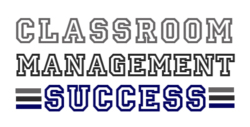Technology can be a friend of teachers, but it can somewhat be a nightmare to them too. Especially when a student gets the latest iPhone and brings it to class, suddenly everyone just wants to see it, hold it and feel the luxury phone on their own hands. It’s hard for some to control students that do not want to be controlled. It’s hard to control a classroom when there’s a buzzing sound of a cellphone from time to time.
There are many ways to approach a ‘cellphone-infested’ classroom. By ‘cellphone-infested’, I mean students don’t want to separate from their phones, and you can see them texting or fiddling with their phones from time to time. You can be hard and strict, but let’s face it, that approach will just make them rebel (especially in Middle School). You can just, like how Elsa said it, “let it go”. Let them have their phones, let them text in class, however, that is the ultimate distraction for you, the teacher.
I’d like to help you out. I found these online, and maybe you can try them for yourself. I can wait to try them for my classes too! Here are some cute, fun ideas on managing cell phones in the classroom:
- Phone Hotel
Before classes begin, have your students check-in their cellphones into the phone hotel. Each student has his or her own cubby for his or her phone.

- Hanging Phone Holder
Same as the phone hotel, but this one can also be your attendance tracker. You’re hitting two birds with one stone on this one!

- Phone Prison
Don’t want the liability of “taking care” of your students’ phones? You always have the choice to let them have their phones in class, but state a law that once they get caught using their phones, their phones will have to do some jail time.

- Put a Sign
Let them know that you know if they’re using their phones even when you’re not directly looking. Have a fun sign by the door so everyone can read it and will be aware of what you know.

This one made me laugh so hard. It’s so smart!
There you go! See, managing cell phones in the classroom can be fun too. I hope even just one method works for you. Let me know how it goes!





